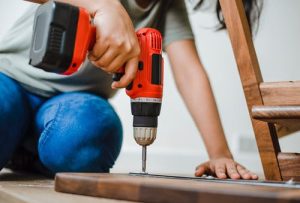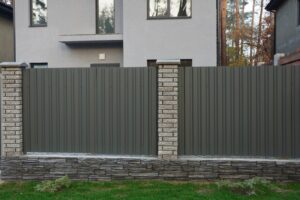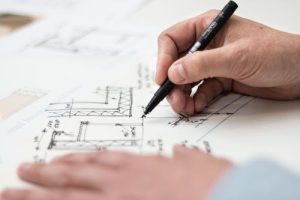Property damage restoration is a complex and multifaceted process that involves meticulous planning, specialized knowledge, and coordinated efforts. When properties are damaged due to natural disasters, fires, water leaks, or other incidents, immediate and effective restoration becomes paramount to mitigate further damage and restore normalcy.
The process typically starts with a comprehensive assessment to understand the extent of the damage and determine the appropriate restoration plan. This thorough process involves several critical steps to ensure the property is safe, structurally sound, and habitable. Here are the detailed steps involved in property damage restoration:
1. Assessment and Inspection
The first step in property damage restoration is a comprehensive assessment and inspection. Professional disaster restoration services evaluate the extent of the damage caused by water, fire, mold, or other factors. This involves identifying all affected areas and materials, including those not immediately visible. Tools such as moisture meters, thermal imaging cameras, and air quality monitors are often used to gather detailed information. The assessment helps create a tailored restoration plan outlining the necessary steps, resources, and timelines.
2. Securing the Property
The property is secured to prevent further damage and ensure safety. This includes boarding broken windows and doors, covering damaged roofs with tarps, and installing temporary fencing. Securing the property helps protect it from weather elements, vandalism, and unauthorized entry. Safety inspections are also conducted to identify and mitigate immediate hazards, such as structural instability and exposed electrical wiring.
3. Water Removal and Drying
In cases of water damage, the next step involves removing any standing water and thoroughly drying the property. Industrial-grade pumps and wet/dry vacuums are used to extract water. Dehumidifiers and air movers are then employed to remove moisture from the air and affected materials. Professionals from San Marcos, TX, continuously monitor moisture levels using meters to ensure all areas are arid. This step is crucial to prevent mold growth and further structural damage.
4. Smoke and Soot Removal
Smoke and soot removal are essential for properties damaged by fire. Restoration professionals clean soot from surfaces using specialized cleaning agents and techniques. Air scrubbers and HEPA filters purify the air and remove smoke particles. Odor removal techniques, such as thermal fogging, ozone treatments, or hydroxyl generators, are employed to eliminate persistent smoke odors. This step ensures the property is free from smoke-related damage and smells.
5. Mold Remediation
If mold is present, mold remediation is conducted to remove it and prevent future growth. This involves isolating the contaminated area to prevent mold spores from spreading, using air filtration devices, and cleaning or removing mold-infested materials. Professionals follow guidelines set by organizations like the EPA or IICRC to ensure the mold is effectively and safely removed. Mold restoration services Canyon Lake also include addressing the source of moisture to prevent recurrence.
6. Cleaning and Sanitizing
After addressing the primary damage, thoroughly cleaning and sanitizing the entire property is necessary. This includes cleaning walls, floors, ceilings, furniture, carpets, and personal belongings. Specialized cleaning products and techniques remove contaminants, and disinfectants are applied to sanitize surfaces. This step ensures the property is safe and healthy for occupants.
7. Structural Repairs
Restoring structural integrity is a critical part of the restoration process. This involves repairing or replacing damaged structural elements, such as beams, floors, walls, and roofs. Professionals ensure that all repairs meet local building codes and safety standards. Electrical and plumbing systems are also inspected and repaired as needed. Structural repairs are essential to ensure the property is safe and sound.
8. Content Cleaning and Restoration
Personal belongings and furniture affected by the damage are cleaned and restored. This process includes assessing the condition of items, cleaning and sanitizing them using specialized techniques, and restoring them to their pre-damage condition if possible. Items beyond repair are documented for insurance claims and properly disposed of. Content cleaning and restoration help preserve valuable and sentimental items.
9. Restoration and Reconstruction
This step involves the restoration and reconstruction work needed to return the property to its pre-damage state. This includes painting walls, installing new flooring, repairing roofs, and performing other necessary construction work. The goal is to make the property look and function as before the damage occurred. Restoration professionals coordinate with contractors and other specialists to ensure high-quality results.
10. Final Inspection and Quality Assurance
After all restoration work is completed, a final inspection is conducted to ensure everything has been done correctly and to the highest standards. This includes checking for missed damage, verifying that all repairs are up to code, and ensuring the property is safe and habitable. Any issues identified during the inspection are addressed promptly. Quality assurance ensures the restoration work meets industry standards and the property owner’s satisfaction.
Final Thoughts
Property damage restoration is an intricate process that encompasses several critical steps designed to return damaged property to its original state or even better. Each step requires specialized skills and tools, from initial assessment and damage containment to thorough cleaning, repairs, and final inspections. Understanding the sequential stages—from mitigation and structural drying to mold remediation and reconstruction—equips property owners and restoration professionals with the knowledge needed for effective intervention.





